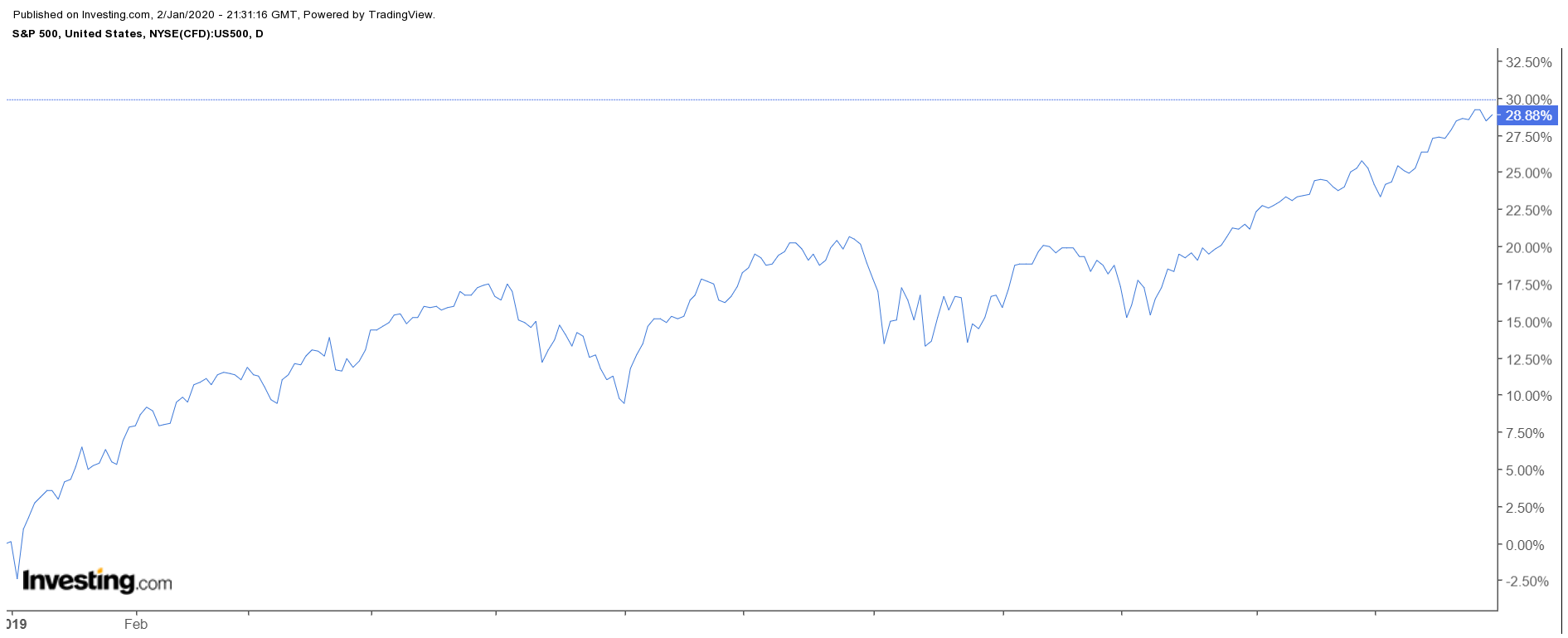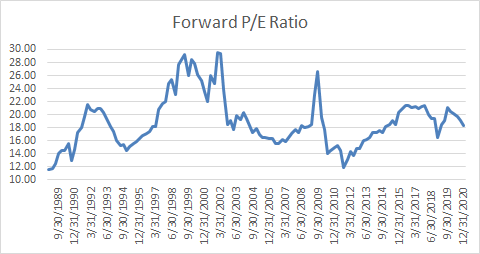WATCH LIVE: Investing.com reveals the top 10 stock picks for 2026
This post was written exclusively for Investing.com
The S&P 500 had a healthy 2019 rising from the abyss to finish the year higher by almost 29%. The significant advance to some degree appeared to be laid out from the very beginning of the year.
The market’s steep 2018 sell-off on fears of a 2019 U.S. recession, left stocks and earnings multiples battered. It made the setup for stocks heading into 2019 simple in some regards. A recession would cause profits to collapse and send earnings multiples higher, justifying the sell-off. Meanwhile, no recession meant stocks were too cheap and hard to ignore.
However, the outlook for 2020 doesn’t seem as clearly laid out.
Instead of entering the new year oversold and trading well below historical norms, stocks are trading near their historical averages to start 2020. This means that there may not be that much upside left for the equity market in this new year, given 2019’s big year-end push.
And, the recent rally in stocks could be just as easily derailed should earnings estimates fall, or investors choose not to give stocks higher earnings multiples.

Fairly Valued
The S&P 500 is currently trading for roughly 18.5 times 2020 earnings estimates of $175.52 per share, based on data from S&P Dow Jones. Going back to the year 1988, on average, the S&P 500 trades for around 18.9 times forward earnings estimates. At that valuation, the index would trade for roughly 3,315, just 2% higher than its level of 3,257 on Jan. 2.
More Risk Taking Needed
It means for equities to see a meaningful advance in 2020, it may take investors chasing for returns in a low-interest rate world to pay higher prices. In the absence of earnings estimates rising, one key driver for equity prices in 2020 will have to come from investors' appetite for risk rising. That means the S&P 500 will have to see its forward P/E ratio rise above that 30+ year average of 18.9.

(Data From S&P Dow Jones)
Earnings Estimates
Another big problem for the S&P 500 in 2020 will be the earnings estimates themselves. For example, earnings estimates fell dramatically throughout 2019. Should the same happen again in 2020, it will put further pressure on equities to rise purely on multiple expansion and that could result in stocks becoming grossly overvalued.
For example, in 2019, earnings estimates fell by nearly 8% to $158.14 from $171.74 on Dec. 31, 2018. But they had been as high as $176.49 on Sept. 28, 2018, a decline of almost 10.5%. Meanwhile, estimates for 2020 have dropped almost 6% from a high of $186.36, to its current $175.52 per share.

(Data From S&P Dow Jones)
Low Rates
The path ahead for stocks is less certain than a year ago. Despite the signs of an economy that is improving, we can’t be sure if it will translate into higher earnings estimates for 2020.
Additionally, if the economy does improve, it could result in yields rising on the long-end of the curve, making stocks less attractive, and keeping a lid on just how much risk some investors will be willing to take, and the price they are willing to pay.
The year-end surge in stocks have left prices at levels that already seem fairly valued, and it is going to take some heavy lifting for them to continue to push higher this year. It could result in the bull narrative easily getting thrown off while sending equity prices lower in 2020, not higher.
At the very least, this seems to be a narrative to watch closely.
